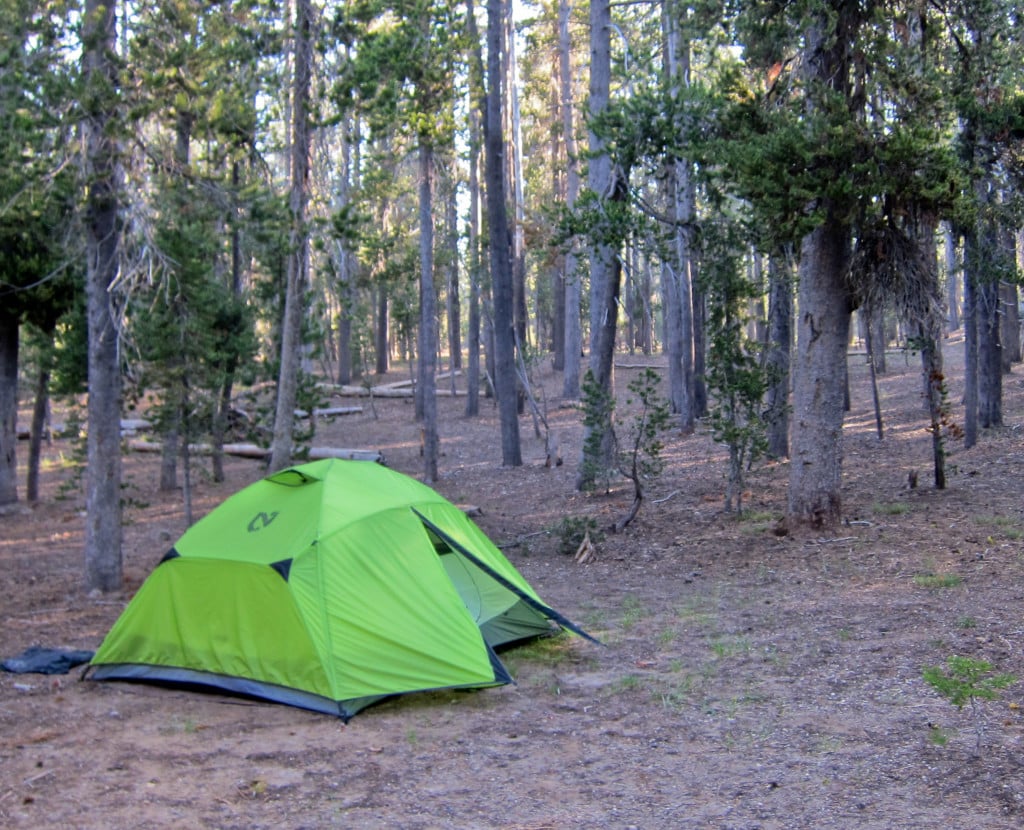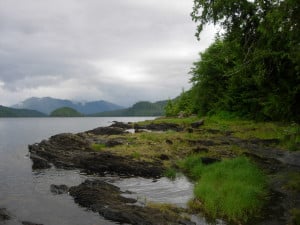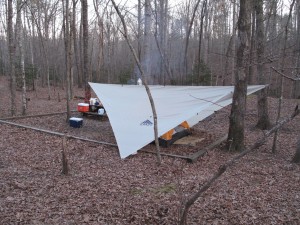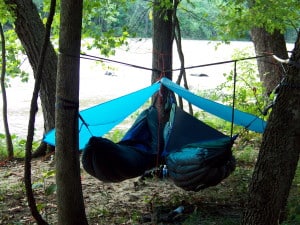Road Trip Tent Basics:
 The road trip tent is probably the most important topic, and certainly the most important interest on this site! The tent is what allows you to replace a hotel or cabin, an RV or even a hostel along the way. It is your shelter, your sleeping quarters and in some degrees, your temporary home.
The road trip tent is probably the most important topic, and certainly the most important interest on this site! The tent is what allows you to replace a hotel or cabin, an RV or even a hostel along the way. It is your shelter, your sleeping quarters and in some degrees, your temporary home.
To select a proper road trip tent, the first thing you need to decide is how many people it will need to hold. All tents are rated for their capacity and truth be told, they’re usually rated for “very close” quarters when it comes to sleeping arrangements. In general, to have a bit of comfort, you’ll want to select a tent that will hold at least one more than are intended to sleep in the tent. If you’re a couple, a three person tent will probably be ideal. For a family of four, a five or more person tent would probably be more suitable.
The next thing to figure out is the season rating you want for the tent. Most common are three season tents, or tents that are designed for spring, summer and fall use. Four season tents, obviously, add winter to the host of seasons. For most people, a three season tent is fully adequate. You’ll know if you’re a candidate for a four season tent, as in you like to alpine climb or sub-freezing camping is your cup of tea. For pretty much anyone who’s considering a trek to the north, a three season tent will be more than adequate. You would have to be borderline crazy to make a go of tent camping to Alaska in the winter, but it could theoretically be done.
Some essential features you’re probably going to want to have in your road trip tent for your Alaska adventure will be adequate rain protection and a quality fully encompassing rain fly. A tent footprint bottom layer accessory, quality tent poles and decent quality zippers should also be on the list. Ease of setup is another important feature, since you’ll be putting it up and taking it down often for a road trip like this. If there are two or more of you staying in the same tent, multiple zippered doors are a very nice feature that makes getting in and out of the tent a much more pleasant experience. You will also appreciate good ventilation and possibly a mesh tent top for clear, summer nights.
You don’t need to pursue the highest end, best possible grade tent for your Alaska road trip. For most people on a non-alpine adventures, you really won’t need the features found in tents geared towards this niche market. Typically, most of these tents are designed for special circumstances like holding together in high winds, sustaining feet of snowfall or crazy levels of durability. You also don’t need to pursue the most lightweight option, which typically increases cost, as weight really isn’t a major factor when road trip tent camping. A backpacker model is fine, but you don’t need to pursue the most expensive models as again, these are primarily designed for a specific market.
 From there, you’ll find when tent shopping that there is a bit of variation in price and features. To some degrees, you get what you pay for. More expensive tents feature better internal organization options, higher quality materials, better rain protection, long-term durability and accessory options. There’s also tents that are as lightweight as possible, typically designed for backpacking. Weight is only sort of important when you’re car-camping, but this might be an important feature if you want the investment to double duty as a backpacking tent. There’s also a bit of name-recognition and “brand bling” that happens in the market, too. For the most part, relatively cheap tents (around or less than $100) do perform as a basic shelter, but often lack in important areas like rain protection and long-term durability.
From there, you’ll find when tent shopping that there is a bit of variation in price and features. To some degrees, you get what you pay for. More expensive tents feature better internal organization options, higher quality materials, better rain protection, long-term durability and accessory options. There’s also tents that are as lightweight as possible, typically designed for backpacking. Weight is only sort of important when you’re car-camping, but this might be an important feature if you want the investment to double duty as a backpacking tent. There’s also a bit of name-recognition and “brand bling” that happens in the market, too. For the most part, relatively cheap tents (around or less than $100) do perform as a basic shelter, but often lack in important areas like rain protection and long-term durability.
If you have older children, they might enjoy staying out in their own little tent. This is very common among camping families and can foster an important appreciation of the outdoors in many children. Providing this independence and outdoor adventure can truly inspire your children for life. Regardless, the main tent you select should probably be able to adequately house everyone in the family since it’s unlikely that an inexpensive children’s pup tent will be up to the task of handling a rain storm. They also might simply get scared and likely would choose to seek refuge in the larger, quality tent.
Road Trip Tent Budget:
 If you don’t all ready own a tent, or what you have isn’t up to grade, the road trip tent will be an important purchase. You don’t need to go all out and buy a super expensive tent, as often these are designed well beyond a road trip tent’s requirements. Plus, you want to save some of your budget for other really important things that will make your journey much more comfortable and pleasant. Do keep in mind that your road trip tent is your central means of camping at all, so spending a bit of money on a quality tent should be a relative priority. In comparison to a nice hotel or cabin, the cost of a very good tent could very well equal a single night’s stay.
If you don’t all ready own a tent, or what you have isn’t up to grade, the road trip tent will be an important purchase. You don’t need to go all out and buy a super expensive tent, as often these are designed well beyond a road trip tent’s requirements. Plus, you want to save some of your budget for other really important things that will make your journey much more comfortable and pleasant. Do keep in mind that your road trip tent is your central means of camping at all, so spending a bit of money on a quality tent should be a relative priority. In comparison to a nice hotel or cabin, the cost of a very good tent could very well equal a single night’s stay.
For most travelers, a retail, non-sale budget will for an appropriate road trip tent will probably be in the $250 to $400 territory. You can pay half that or less if you can buy it at the right time by shopping a good sale. Some good brands of quality tents are REI, Marmot, Cascade Designs, Mountain Hardware and others.
If you can, definitely shop end-of-season sales and other “once a year” sales for your road trip tent. Another good option is to review outlet shops that sell previous year models at a discounted price. You can get some really nice sales where you’ll pay less than half the original store price, or in some cases, even much less than that! This can get you in a higher grade of gear for a very fair price, providing better value for the purchase. Spring can also be a good time to shop if you watch the sales, but the end-of-season gear sales are usually the best.
During a really good sale, you can net a high quality three or four person road trip tent in the $100 to $150 range. That same tent could be on sale for around $180-200 at times and might generally retail as high as $300. Larger tents will command higher prices than these, and some really large tents can get somewhat expensive.
If you can plan ahead, obviously it’s in your interests, but if you don’t have the time you’re probably going to need to pay a bit more to get into something of decent, Alaska worthy quality. If your timeline simply doesn’t allow shopping the sales, certainly compare similar makes and models against various vendors to try and get the best price. For a new tent, you do want at least a bit of time with it before you leave to prepare it to set it up a couple of times, test it out and make sure it will address your needs. Don’t leave the purchase for the last minute!
Making Do With A Cheap Tent:
 If you absolutely cannot afford a good quality road trip tent and just want to go with what you have, there are ways you can make do with a lesser quality tent.
If you absolutely cannot afford a good quality road trip tent and just want to go with what you have, there are ways you can make do with a lesser quality tent.
For example, a make-shift footprint for moisture protection can easily be substituted by an appropriately sized tarp and it will function almost the same. You might have to do some careful tucking of the edges if you’re really anticipating rain to prevent rain water from funneling to the floor of your tent, but you can definitely make do with this solution.
If your road trip tent suffers from less than adequate rain protection, you can easily suspend a tarp over your tent to prevent most of the water from hitting the tent in the first place. This is generally a good practice anyway as it will allow a relatively inexpensive tarp, that can easily be replaced if necessary, to take the brunt of any rain. We advocate taking at least 2-3 tarps and a decent collection of bungee cords on your Alaska journey, so these should be in your kit regardless of how good a tent you can afford. Using this technique in rainy conditions will also help extend the life of your tent, regardless of the quality.
We also recommend a good dose of waterproofing if your tent is aging and perhaps not up to it’s original water tight finish. This should be performed at least on the rain fly and the bottom layer of the tent. Nikwax makes a high quality waterproofing material that is designed for tents and other common outdoor gear fabrics. This can rejuvenate the water proof qualities of an existing tent, especially if rain performance has suffered over the years. We have used this brand extensively over the years and would testify to the quality of the product.
With a roll of duct tape, you could feasibly make most tent repairs if it came right down to it. An emergency repair like this might not be ideal, especially if you rip a seam along the zipper, but it could do for a pinch. Again, duct tape is on the essentials checklist.
The Hammock:
 A growing popular means of shelter are hammocks. These tend to be most popular among backpackers, but might appeal to some people who might be considering a trek to Alaska. Although they typically cost similarly, or more, than your traditional tents, they open a great deal of flexibility when it comes to selecting a camping spot. Two trees, practically everywhere in Alaska, can be found to suspend a hammock. Many models feature adequate means of rain protection, warmth via the use of custom-made quilts and advanced installation hardware that makes setup and tear down a breeze.
A growing popular means of shelter are hammocks. These tend to be most popular among backpackers, but might appeal to some people who might be considering a trek to Alaska. Although they typically cost similarly, or more, than your traditional tents, they open a great deal of flexibility when it comes to selecting a camping spot. Two trees, practically everywhere in Alaska, can be found to suspend a hammock. Many models feature adequate means of rain protection, warmth via the use of custom-made quilts and advanced installation hardware that makes setup and tear down a breeze.
Better yet, there’s a great deal of information out on the internet about how to make your own hammock system. With enough time and skill, you could feasibly put together a hammock system and your costs could challenge even the best sale for a tent or hammock you could ever possibly find.
There’s probably a few inherent drawbacks to the hammock system. It’s certainly less social when it comes to journeys for more than one and some couples might find it difficult to grasp the concept of sleeping apart. Some models are more vulnerable to chilly temperatures, so you would want to make sure your hammock is good down to about 40 degrees for a summer time road trip.
